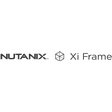Public cloud services are evolving and so is the adoption of cloud services across major broadcasters and TV production companies. Run any Windows application on any device using a HTML5 browser all powered by cloud services – this is the new normal writes Nutanix senior technologist Ruben Spruijt.

According to the IABM executive keynote speech at IBC2019, over 47% of broadcast and media companies are deploying public cloud services in their organisation, up from 39% in 2018.
Advantages of cloud are well tested and proven – the ability to deploy and deliver applications quicker and more effectively, the ability to run the applications close to the data and the use of a browser to access applications from anywhere, including high-end graphics and resource intensive Windows applications on any device.
Computer resource can be allocated in a-just-in-time manner from anywhere in the world, customers pay only for actual usage with the ability to support seasonality, and coupled with the additional security of data and communications, have all unlocked new use-cases driving the adoption of cloud.
If a company chooses to deploy different cloud services for separate media workflows, how can this be managed effectively? Deploying and managing media workflows across all these environments was traditionally very difficult to do. Until now.
It is important that the service is ‘born in cloud’ supporting multi-tenancy that can leverage multi-clouds. This must include public clouds such as AWS, GCP and Azure, as well as on-premises using Nutanix. The service must be extremely easy to consume by business consumers and IT focused personnel. A very well-designed admin and user interface (UI) delivering the best user experience (UX) is key! “I love a crappy user experience” said no one ever.
Companies do like freedom of choice so they can select the best solution for their use-case. There is no one size fits all, both public clouds and on-premises data centre solutions has its pros and cons therefore a hybrid cloud including a hyper converged infrastructure approach is applicable for many. If customers do think public cloud infrastructure services are always available in every region, has the lowest cost, maximum flexibility and best performance, they need to think twice.
In the broadcast world, provisioning a desktop-as-a-service has come of age. At Nutanix we have been working to provide services for different workflows including post-production workflows and programme management.
Utilising both public clouds such as Azure, AWS, GCP and modern on-premises data centres, we have examples of virtualised environments to provide editing on cloud workstations.
An example is using Adobe Premier Pro for our broadcast clients in the cloud on any device, which can be shared amongst editors across both Asia and Europe. By utilising Nutanix Frame ‘Application and Desktop as a Service’, customers can run their apps within a HTML5 browser, the data is secure, and video files can be opened, edited and shared securely amongst different cloud regions and Nutanix powered data centres.
In another example, a customer is using Autodesk and Adobe Software in multiple cloud locations where they operate After Effects with powerful rending capabilities. They use Microsoft OneDrive and Google Drive cloud storage which is natively integrated into Frame, giving colleagues instant access to applications and their data. By utilising Nutanix Frame Remoting Protocol (FRP) applications are ‘streamed’ for remote displaying.
The protocol supports multi-monitors, high-end graphics and 4K video formats, proven to 60fps, within a standard HTML5 browser environment. The end user device being utilised and where they are located becomes less relevant. Want to use Chromebooks, Apple MacBooks, managed or un-managed Windows devices to run your applications? Yes, you can!
I am often asked how the Nutanix Frame approach differs from end user computing solutions from others such as Amazon, Citrix, Teradici or VMWare. Frame is different and it is great to be different and disrupt the market while staying hungry to be the best, humble and honest.
Frame started 7 years ago as a cloud service. This service is born in the cloud and does support AWS, Azure, GCP and on-premises infrastructure powered by Nutanix. The solution is API driven (both admin and application), is fully multi-tenant and has a very-easy-to-use user interface.
Frame is delivering the best user experience using our own streaming protocol to deliver any application to any device using HTML5 browser. The service includes the complete technology stack to run applications and Desktop as a Service (DaaS) such as capacity image management, Windows user-profile containers and includes key enterprise features, secure gateway networking and built-in security functionality.
Many customers want to use their own public cloud subscriptions and they can very easily connect their infrastructure to the Frame service. “Frame is Virtual Desktop Infrastructure (VDI) made simple.”
Customers can start small - starting with 5 users and pay per usage on a monthly basis, while others prefer an annual or multi-year subscription supporting 10,000s of users in their organisation.
With the increase in remote working and the variety of devices that are used in our everyday work life, it has never been easier to give users, contractors, business-consumers access to applications using Nutanix Frame. The use of cloud services has become ubiquitous in our everyday life to the point now that data is born and developed in the cloud. Desktop as a service is a great experience, engaging and easy to work with. Virtual cloud workstation has evolved – available for consumption on any device, anywhere, now, wow!
Ruben Spruijt is senior technologist at Nutanix.



























No comments yet